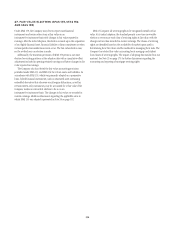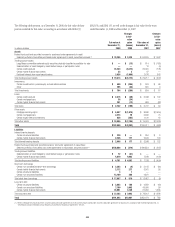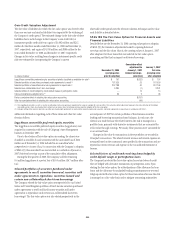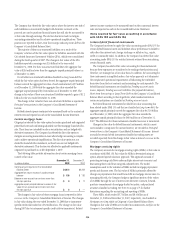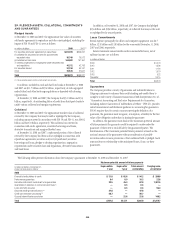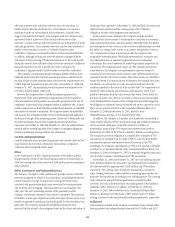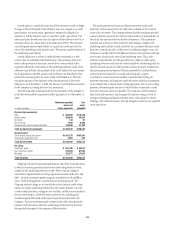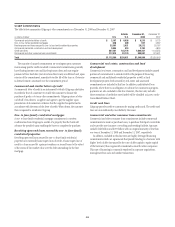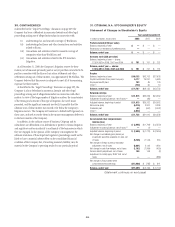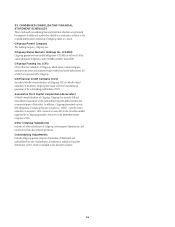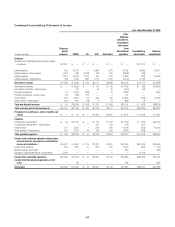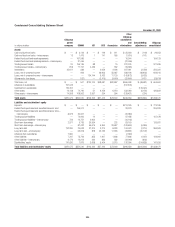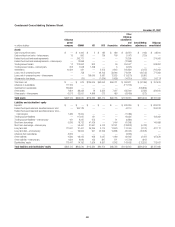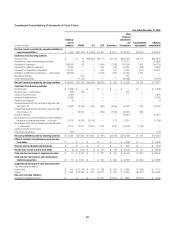Citibank 2008 Annual Report Download - page 218
Download and view the complete annual report
Please find page 218 of the 2008 Citibank annual report below. You can navigate through the pages in the report by either clicking on the pages listed below, or by using the keyword search tool below to find specific information within the annual report.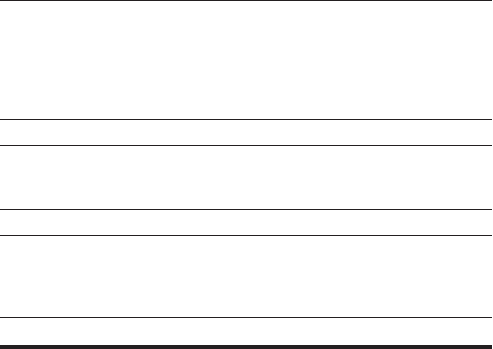
A credit option is a credit derivative that allows investors to trade or hedge
changes in the credit quality of the reference asset. For example, in a credit
spread option, the option writer (guarantor) assumes the obligation to
purchase or sell the reference asset at a specified “strike” spread level. The
option purchaser (beneficiary) buys the right to sell the reference asset to, or
purchase it from, the option writer at the strike spread level. The payments
on credit spread options depend either on a particular credit spread or the
price of the underlying credit-sensitive asset. The options usually terminate if
the underlying assets default.
A credit-linked note is a form of credit derivative structured as a debt
security with an embedded credit default swap. The purchaser of the note
writes credit protection to the issuer, and receives a return which will be
negatively affected by credit events on the underlying reference credit. If the
reference entity defaults, the purchaser of the credit-linked note may assume
the long position in the debt security and any future cash flows from it but
will lose the amount paid to the issuer of the credit-linked note. Thus the
maximum amount of the exposure is the carrying amount of the credit-
linked note. As of December 31, 2008, the amount of credit-linked notes held
by the Company in trading inventory was immaterial.
The following table summarizes the key characteristics of the Company’s
credit derivative portfolio as protection seller (guarantor) as of December 31,
2008:
In millions of dollars
Maximum potential
amount of
future payments
Fair
value
(payable)
By industry/counterparty
Bank $ 943,949 $118,428
Broker-dealer 365,664 55,458
Monoline 139 91
Non-financial 7,540 2,556
Insurance and other financial institutions 125,988 21,700
Total by industry/counterparty $1,443,280 $198,233
By instrument:
Credit default swaps and options $1,441,375 $197,981
Total return swaps and other 1,905 252
Total by instrument $1,443,280 $198,233
By rating:
Investment grade $ 851,426 $ 83,672
Non-investment grade 410,483 87,508
Not rated 181,371 27,053
Total by rating $1,443,280 $198,233
Citigroup evaluates the payment/performance risk of the credit derivatives
to which it stands as guarantor based on the credit rating which has been
assigned to the underlying referenced credit. Where external ratings by
nationally recognized statistical rating organizations (such as Moody’s and
S&P), are used, investment grade ratings are considered to be Baa/BBB or
above, while anything below is considered non-investment grade. The
Citigroup internal ratings are in line with the related external credit rating
system. On certain underlying referenced credit, mainly related to over-the-
counter credit derivatives, ratings are not available, and these are included in
the not-rated category. Credit derivatives written on an underlying non-
investment grade referenced credit represent greater payment risk to the
Company. The non-investment grade category in the table above primarily
includes credit derivatives where the underlying referenced entity has been
downgraded subsequent to the inception of the derivative.
The maximum potential amount of future payments under credit
derivative contracts presented in the table above is based on the notional
value of the derivatives. The Company believes that the maximum potential
amount of future payments for credit protection sold is not representative of
the actual loss exposure based on historical experience. This maximum
potential amount has not been reduced by the Company’s rights to the
underlying assets and the related cash flows. In accordance with most credit
derivative contracts, should a credit event (or settlement trigger) occur, the
Company is usually liable for the difference between the protection sold and
the recourse it holds in the value of the underlying assets. Thus, if the
reference entity defaults, Citi will generally have a right to collect on the
underlying reference credit and any related cash flows, while being liable for
the full notional amount of credit protection sold to the buyer. Furthermore,
this maximum potential amount of future payments for credit protection
sold has not been reduced for any cash collateral paid to a given
counterparty, as such payments would be calculated after netting all
derivative exposures, including any credit derivatives, with that counterparty
in accordance with a related master netting agreement. Due to such netting
processes, determining the amount of collateral that corresponds to credit
derivative exposures only is not possible. The Company actively monitors
open credit risk exposures, and manages this exposure using a variety of
strategies including purchased credit derivatives, cash collateral or direct
holdings of the referenced assets. This risk mitigation activity is not captured
in the table above.
212


